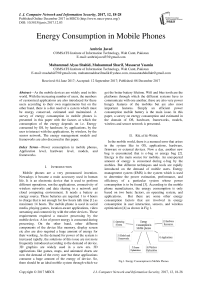Energy consumption in mobile phones
Автор: Ambrin Javed, Muhammad Alyas Shahid, Muhammad Sharif, Mussarat Yasmin
Журнал: International Journal of Computer Network and Information Security @ijcnis
Статья в выпуске: 12 vol.9, 2017 года.
Бесплатный доступ
As the mobile devices are widely used in this world. With the increasing number of users, the numbers of customized applications are also introduced for these users according to their own requirements but on the other hand, there is a dire need of a system which must be energy conserved, estimated and maintained. A survey of energy consumption in mobile phones is presented in this paper with the factors at which the consumption of the energy depends on i.e. Energy consumed by OS, by hardware, by applications, by the user to interact with the applications, by wireless, by the sensor network. The energy management models and frameworks are also discussed in this paper.
Power consumption in mobile phones, Application level, hardware level, models, frameworks
Короткий адрес: https://sciup.org/15015559
IDR: 15015559 | DOI: 10.5815/ijcnis.2017.12.03
Текст научной статьи Energy consumption in mobile phones
Published Online December 2017 in MECS
Mobile phones are a very pronounced invention. Nowadays it became a main accessory used in human life. It is an electronic device that is used to perform different operations, run the applications, connectivity of wireless networks and data sharing in a network and cloud computing environment. It needs a battery as energy source. These batteries are required 1 to 4 hours to charge that is not enough for few hours talk time [1] as maximum 14 hours. The mobile phone is used in social media, playing games, location-aware applications, video streaming and connectivity with the other devices. These requirements required a massive processing by the mobile device. A lot of power energy is consumed during processing. On the other hand, other different components of the device like memory, display screen etc also are also required a huge amount of energy for their working. As the demand for power of the system is increased rapidly, the solutions of this issue are not more frequently introduced according to the demand of device. 3D graphics are widely used in a new era. 3D applications like games, maps, and animated charts are now the demand of the every user but these applications consume a huge amount of the energy of device. So, there should be an ideal mobile system through which we get the better battery lifetime. Wifi and blue tooth are the platforms through which the different systems have to communicate with one another, these are also very power hungry features of the mobiles but are also most important features. Simply an efficient power consumption mobile battery is the main issue. In this paper, a survey on energy consumption and estimated in the domain of OS, hardware, frameworks, models, wireless and sensor network is presented.
-
II. Related Work
In the mobile world, there is a numeral error that arises in the system like in OS, applications, hardware, firmware or external devices. Now a day, another new bug is encountered that is e-bug or energy bug [2]. Energy is the main source for mobiles. An unexpected amount of energy is consumed during e-bug by the mobiles. But different techniques and tools are rapidly introduced on the demand of mobile users. Energy management system (EMS) is the system which is used to determine the power estimation, performance, and efficiency of a particular system whose power consumption is to be found [3]. According to the mobile phone manufacturer, the energy consumption is only based on two basic factors, an operating system, and applications. But there are some other energy consumption factors that are involved in energy consumption in user interaction, sensors, and wireless optimization [4] as shown in Fig 1.
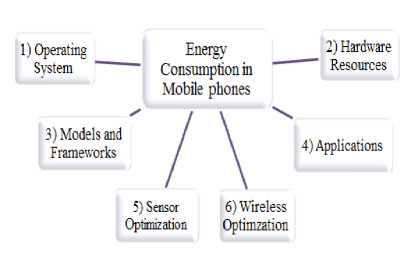
Fig.1. Energy Consumption in Mobile Phones
In this paper, these factors are discussed in a context of energy consumption in smartphones.
Because the Mobile equipment is widely used with cloud computing environment to formulate mobile cloud computing, in [5] and [6] researchers presented some methods for energy optimization in mobile cloud computing.
In [7] a scheduling algorithm for the energy-aware workload of different applications and software was developed to measure the impact of the workload of applications on energy consumption in mobile phones. In [8], the studied approach presented a relationship between the strength of the wireless signal and energy consumed during data transferring.
A new power model was suggested for WiFi and 3G that helped to measure the impact of signals strength/weakness on the power consumed in the smartphone by the embedded wireless components. The energy consumption of data transmission and connection over 802.11 wireless-based networks measured in [9]. In presented research, it was concluded that the devices context, handset, and the Operating Systems are also included among such factors which affect the optimal strategy of data transmission.
In the similar context and framework, a comprehensive study was made in [10] about efficient and resilience mobile cloud computing. In [11], the researchers proposed a new and efficient model that distributes tasks to certain applications and software that are executed on smart devices and directs to other tasks that are executed in a cloud environment.
-
III. Energy Aware Operating System
The operating system is a main and necessary component of any device. Power consumption by the operating system is also a main issue for the developers. There are a number of operating systems introduced for mobile phones. Operating systems are main cause sources of energy consumption [12]. The graph in Fig 2 shows a number of operating systems which are used in cell phones. The name and percentage of their energy consumption are:
Android 50.9%
Symbian 11.7%
OS 23.8%
RIM 8.8%
Bada 2.1%
Microsoft 1.9 %
Others are 0.8%.
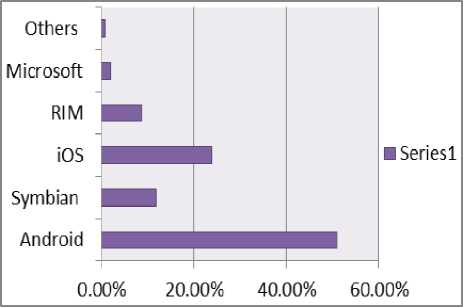
Fig.2. Energy Consumption by Operating Systems
In [13] the Android JAVA is compared with the Sun embedded operating system and their performances are examined. According to the author, the Android operating system works more efficiently as compared to Sun embedded operating system. Android, Symbian, IOs, Microsoft, TinyOS [94], and other operating systems are a platform for other energy-aware operating systems that are discussed in this paper.
ECO-system is another energy-aware operating system [14-16] that is to be worked on the Linux-based operating system. Its functionality is to distribute its power between application and trade-off efficiently to complete some specific tasks. The ECO-system encounters the energy conserved by service for the synchronous operation to get the best battery timings of the device. Cinder operating system [17-18] works for the managing the energy efficiency in the application by using three control mechanisms i.e. isolation, delegation, and subdivision. The prototype is tested on Android G1 which is normally worked on Mac, Android or Microsoft operating system.
Erdos operating system is user-centered that extends the lifetime of smartphones, security and manages the resources [19] Erdos consists of three main modules: Activity Manager (responsible to manage applications during their runtime and trigger the event when a special call occurs i.e. when the system is going to be shut down due to certain reasons or demand for the resources hardware etc.), Access Control Manager (control flow of data and errors when the data is transferred over network), and Erdos Manager (a central unit that controls all the resources locally).
Odyssey operating system [20] is a platform used to transfer data over a wireless connection in mobile phones [21] and is widely used in Grid computing on smartphones. It is a gateway to application and hardware resources. Odyssey OS provides the energy on demand to different components of the system. ContextOS [22] and CondOS [23] are context-aware operating systems that consume less power as compared to the application which is run independently.
Table 1. The Energy-Aware OS and their Descriptions
|
S.no |
Proposed by |
Year |
Operating system |
Platform |
Description |
|
1 |
H. Zeng, et al [24] |
2002 |
ECO-system |
Linux OS |
Distribute the power between applications and trade-off |
|
2 |
Chu, David C, et al [21] |
2009 |
Odyssey OS |
Microsoft, Mac OS |
It works on wireless network, it fulfills the energy demand of resources and applications |
|
3 |
Roy, Arjun, et al [18] |
2011 |
Cinder OS |
Mac OS, Microsoft Window |
Work on 3 control mechanisms |
|
4 |
Vallina-Rodriguez, et al [19] |
2011 |
ErdOS |
Android OS |
User-centered, access control and security |
|
5 |
Ariyapala, Kanishka, et al [20] |
2013 |
ContextOS |
____ |
Manage memory and energy, sensor privacy |
-
IV. Hardware Resources
In a smartphone to reduce power consumption, first of all, one must have enough knowledge about factors and components which affect power efficiency of the system. Many tools and interfaces are introduced that are used for the mobile users to estimate the energy of each component. The screen is hardware component that consumes most of the battery that is approximately 35% [24]. For memory and bandwidth usage a special hardware is used in power consumption that is called rasterization hardware [25].
3G is the fastest wireless network platform through which secure data is transferred with a small energy consumption but the special management hardware unit [26] is used in mobile devices. The following are subsystem hardware units which consumed most of the battery in wireless smartphones:
Multimedia 39.5%
Modem operations 21.5%
Memory 19.4%
LCD 17.6%
Others hardware unit consumes 2% of the smartphone’s battery as shown in Fig 3.
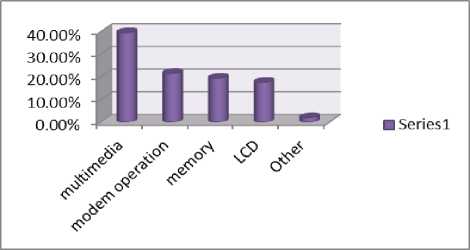
Fig.3. Energy Consumption by Different Components
-
V. Energy Management Models And Frameworks
Energy management models are used to estimate the power. To manage power allocation of different components of a system, authors proposed energy estimation models which give correct energy estimation and automatic battery performance based on power model generation for mobile phones [27-29]. Multicore mobile phones are widely used by the mobile users because they are work on the parallelism. These multicore mobile phones are not powered efficient [30].
Cellular network models [31] are presented but in [32] it is presented that the energy-aware models are not only sufficient for the mobile devices but for gaining best result energy based models and their measurement should work together in the same system. A demandside management (DSM) [33] strategy is used to reduce the usage of energy when multiple users used a single energy source to maintain the energy. The author Murmurs first time divides measurement of a system into sub-systems and present a model that divides the power consumption and estimation of the system that is the sum of power consumption by each sub-system i.e. CPU, display, graphics, audio, wifi etc [34].
Total power used by the application = cpu + display + graphics + gps + audio + mic +-----+ wifi. For the
Android operating system, dynamic voltage and frequency scaling (DVFS) algorithm [35] is proposed that is used for energy saving by regulating the frequency of the CPU. Memory access rate and critical speed for the minimum energy consumption (MAR-CSE) equation is used to find the critical speed which minimizes the energy consumption in the system. A Micro-Blog [36] scheme is used for efficient localization in wifi and GSM.
A monitoring system is also introduced for an Android operating system whose name is smart energy metering operating (SEMO) [37] system. It has a central unit that is called as energy monitoring and analyzer. It has three parts: the first part is for analyzing the information, secondly is for monitoring the battery status, and third part record the battery and application information that what application consume how much amount of energy as shown in Fig 4.
ELens [38] is an approach which is used to estimate the energy and tracking the path during execution of each instruction. This approach doesn’t require some special type of operating system or some special type of hardware resource. An energy-aware framework [39] is introduced especially for Android smartphones. In this framework, a number of models are combined in working state these models are battery energy model, service quality model and system level power model. For taking the experimental result, global positioning system (GPS) application is considered as a case study to maximize the QoS for checking energy life of a system. Communication subsystem energy consumption model (CSECM) [40] works on wireless sensor networks. It is used to measures the estimated amount of power that is consumed in each transmission of data. The author in [41] presented the Mica architecture that is used in an embedded system for providing a wireless platform. It is also used to consume energy when the system is in standby mode.
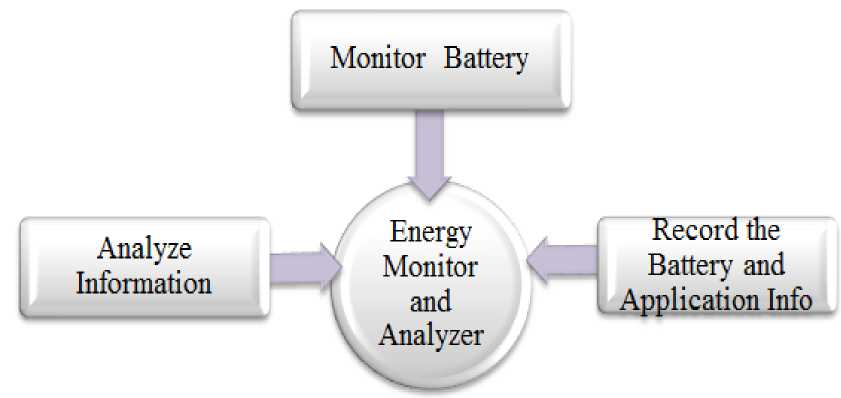
Fig.4. The SEMO Structure [37]
Table 2. Energy Aware Frameworks and Models
|
Author |
Model / framework |
Description |
|
Fangwei Ding, et al [37] |
SEMO |
Monitor the system which works on Android OS. |
|
Shuai Hao, et al [38] |
ELens |
Estimate the track and estimate energy on each instruction. |
|
Wen-Yew Liang, et al [35] |
DVFS |
Regulate the frequency of the CPU |
|
Qin Wang, et al [40] |
CSECM |
Work on WSN, power consumption during data transmission. |
|
Jason L. Hill, et al [41] |
MICA |
Consume energy when system is in standby mode |
|
Amir-Hamed Mohsenian-Rad, et al [33] |
DSM |
Fulfill the demand of the energy resource when multiple users use the single source. |
|
Shravan Gaonkar, et al [36] |
Micro-Blog |
A phone switch between multiple locations, It conserved power during that localization. |
-
VI. Energy Consumption In Applications
It is most important to have knowledge about energy requirements of an application and how this energy is managed? Energy consumption in mobile applications is estimated by special tools. By using these tools, estimated results are obtained that how much energy is consumed by each application? Energy/power efficiency debugging tool is introduced to investigate the performance of the software in a certainly changed scenario and compared to some techniques which are already implemented to reduce the power consumption in mobile phones [42]. Here are some applications which are commonly used by each smartphone like browsers (Mozilla, Opera, and Google Chrome), social media (Facebook, skype, Flicker, YouTube) and games (angry birds, temple run, hill climb racing) as shown in Fig 5.
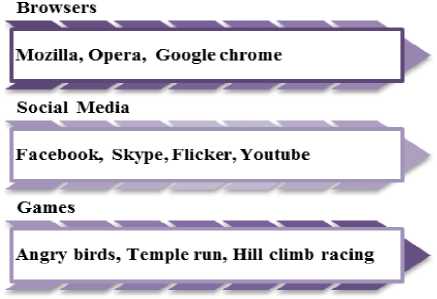
Fig.5. Different Applications of Mobile Phones [42]
YouTube is a website which is mostly visited by the mobile users. As it is a continuous flow of packets, wireless networks International (WNI) should be inactive for receiving these packets. In [43] an Estreamer is presented. The function of the Estreamer is to save a large amount of energy during video streaming. Generally, more energy is consumed in these mobile applications that consume more network resources [44]. Now a day’s browser is also one of the most important applications for cell phones. In surfing web pages a great amount of battery is consumed [45]. The experimental results show that JPEG for image format and JavaScript are best in web paging according to efficient power consumption. The 3D applications are the one of the main cause of energy consumption of a system but by using of DVFS [46] based techniques; approximately 50% energy is saved as shown in Fig 6. In [47] some mobile applications of cell phones and their power consumption are predicted. In graph Fig 6, the browser application is used 0.35% battery when its run time is 30
sec. Angry birds game application is used 0.28% battery when its run time is 28sec, NY times applications are used 0.75% battery when its run time is 41 second and so on. These applications are services and tools that are used by humans to interact with any electronic device. In [48] the results are presented which are obtaining from the users of smartphones that how they use the mobile phones to conserve energy/battery. The mobile devices are the combination of hardware and software [49], the energy-aware scales down techniques are used to fulfill the requirement of a user to manage power intelligently. Now day’s user interface is provided a way to save the power at some extents like the brightness of the screen, wifi and Bluetooth on/off mode etc. [50].
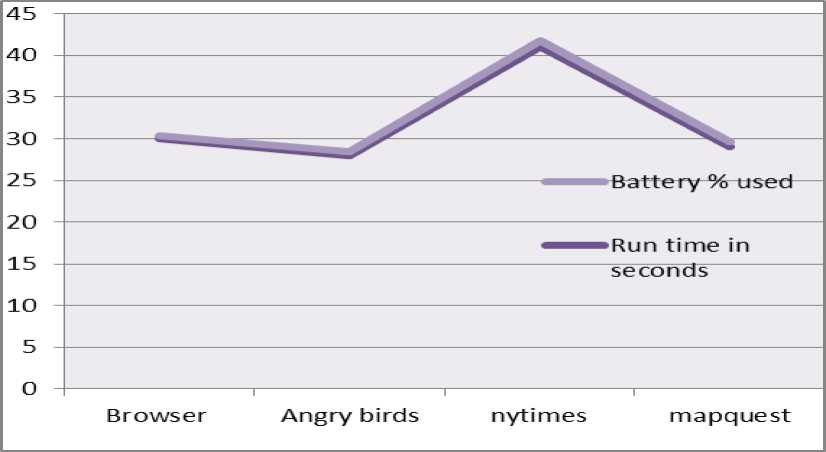
Fig.6. Estimated Power Consumption by Applications
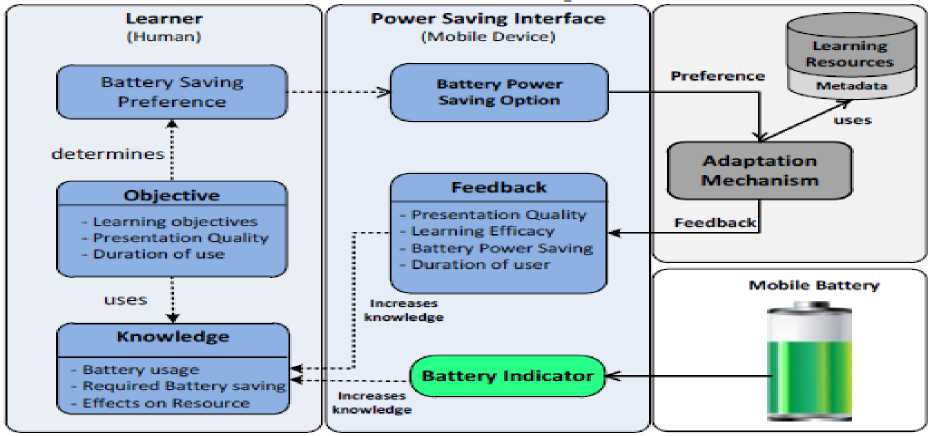
Fig.7. User Learner Battery Interaction [51]
In Fig 7 [51] an interface is explained that is called power saving interface. With this interface, a user interacts gets knowledge and uses options to save power. In short applications and user interaction with the application are also very important factor in energy consumption in a mobile system.
-
VII. Sensor Energy Optimization
Another factor of energy consumption is sensor network, GPS in many smartphones is power hungry but it is still used in sensor network because it detects the location of the sensor node more accurately and efficiently. The mobile users demand a more accurate and efficient system which is less energy consuming and more reliable according to sensor localization [52]. The Bluetooth-based sensor network is used to provide an efficient system in term of cost and energy. So Vtrack [53] system is introduced for sensor optimization. Smartphones are widely used to fulfill the demand of the user, embedded sensor are used like camera [54] (barcode reader), microphones, digital compass etc. These sensors provide a new direction to the mobile devices. The mobile phones are now used in transportation [55-57] like discovering direction, monitoring environment [58] [51] like the temperature of the environment and social network [59] like Facebook, Skype etc.
Movement of the human and surveillance by using wireless sensor networks [95] is examined by the mobile phones because mobile phones are used Accelerometer and a human motion detection application is used in this technique [60]. Another energy attack consumption control technique is used for sensor nodes. As the sensor networks work on the nodes and if the size of the cell is decreased, energy usage is also reduced. In short size of the cell affects the consumption of the battery in a system. In [61] the size of the cell is fixed between two well-defined values. The experimental result shows that battery consumption is reduced approximately 40%. Sensor nodes are of three types used in indoor localization i.e. localization without Beacons, with moving Beacons, with Beacons etc. [62].
The self-organization is the most important and crucial feature of the wireless sensor network. In [63] a selforganization mechanism is presented for sensor nodes with very small amount of power consumption. A sensor is used for speaker sensing [64] and to sense the audio signals. With an audio signal, a low-power processor has attached that work simultaneously with the main processor. It decreases work of power processor of audio speaker sensor.
Table 3. Energy Consumption of Different Sensors [65]
|
S. # |
Sensors |
Approximate Battery Life (hrs) |
Average Power Consumption (mW) |
|
1 |
Video Camera |
3.5 |
1258 |
|
2 |
IEEE 802.11 |
6.7 |
661 |
|
3 |
GPS(outdoor) |
7.1 |
623 |
|
4 |
GPS (indoor) |
11.6 |
383 |
|
5 |
Microphone |
13.6 |
329 |
|
6 |
Bluetooth |
21.0 |
211 |
|
7 |
Accelerometer |
45.9 |
96 |
|
8 |
All sensors Turned off |
170.6 |
26 |
-
VIII. Wireless Energy Optimization
Wireless connection is based on wireless transmission of data. Wi-Fi, Bluetooth or 3G is commonly used for this purpose. Although during transferring of data over the network security and privacy are basic issues of the wireless network. On the other hand, energy consumed by the smartphones based on Wi-Fi [66] and 3G [67] is another burning issue. To find the energy consumption by the wireless network by estimating the energy at each step is expressed in [68]. The Bluetooth [69] is the one of the wireless based networking technique which doesn’t require a high bandwidth and power for data transmission. In [70] an energy-efficient mobile radio network is described. In the wireless network, the nodes forward the data packets to its neighboring nodes. In [7172] routing algorithms are considered that provide blocking. These algorithms first calculate the best possible path according to the energy constraint and then start transmission that is called the global energy-aware routing (GEAR) and then a local energy-aware routing (LEAR) is presented. Due to LEAR, the destination node
doesn’t wait or block. For a wireless network, a distributed optimized protocol (DOP) [73] that support peer to peer communication is worked by that mechanism of configuring itself and maintain the consumption of energy.
In [74] statistical report is described after examining the NTT DoCoM (It is the mobile company in Japan) that 3G feature is the most power consuming part of a mobile system because it works on the radio signals [7576] and compares a number of routing protocols on the basis of energy consumption: one is Ad Hoc on-demand distance vector routing (AODV) [77-79] which can be used for different detection techniques in wireless Ad Hoc networks [96]. This protocol works on when a node is used to transfer data. Simply AODC routing protocol works only on demand. By using this technique power consumption is decreased. The second one is dynamic source routing (DSR) protocol [80] that is used to maintain the list of the nodes through which the packets have to be transferred from its source to destination while temporally ordered routing algorithm (TORA) protocol [81-82]and route-lifetime assessment based routing (RABR) protocol are used for lifetime estimation [83].
The WiMAX is the fastest broadband technique. The 802.16 and 802.16d are worked on the fixed wireless access but the 802.16e [84] is worked on mobile wireless access. There are a number of advantages in WiMAX that are low energy consumption, high data rate over a large distance with great speed etc. While for getting more advantages [85] Wifi and WiMAX are combined together that are used in its applications for optimization.
The video is the main type of data that is transferred over the wireless network in the form video conferencing, skype etc [86]. So the system should manage the resources (energy and hardware) in a better way.
Table 4. Comparison of the Wireless Techniques
|
Wireless technique |
Stands for |
Standard |
Version |
Speed |
Operated by |
Limitations |
|
Wi-Fi |
Wireless Fidelity |
IEEE 802.11 |
802.11n, 802.11b, 802.11g |
100mbit/s |
Mobile phone, tablets, online games |
Modem is required |
|
3G |
3rd Generation of mobile telecom technology |
3G |
3.5 G, 3.75G |
384 Kbit/s |
Smartphone organizations |
Required base station to be close to getting clear radio signal |
|
WiMax |
Worldwide Interoperability for Microwave Access |
IEEE 802.16 |
802.16, 802.16d, 802.16e |
70mbit/s |
Mobile phones, tablets, online games |
Big installation and maintenance cost, modem is required |
-
IX. Discussion And Future Direction
In this paper, the energy consumption in mobile phones is discussed in different components of a cell phone. The cell phones are worked on hardware as well as software. In this paper, the energy consumption at the operating system level is discussed while platforms are Microsoft, Android, Symbian, iOS, RIM or any other OS. The energy consumption operating systems are ECOsystem, Odyssey [87-88] OS, Cinder OS, Erdos and Context OS. At the hardware level, some energy-hungry components are mentioned that how much energy is consumed at computing level by CPU etc? Many models and frameworks are designed for measuring the power consumption. Some of them are given for example SEMO, ELens, DVFS, CSECM, MICA, DSM, and Micro-Blog. Some applications are also mentioned that are widely used throughout the world and also energy-hungry applications. Sensor and wireless networks are main networks which are also the main feature of mobile phones and need of users is increasing day by day. These networks are also energy consuming but there will be an optimal solution for these networks.
Although above-described methods or approaches are good in their performance a more work is needed on the battery with pools of network bytes, which can improve the battery life according to network aspects. The mobile phones can help to motivate the scientists to present the most optimized tools that may be used for minimizing the less energy dissipation in mobile devices during processing, less energy consumption by memory, reduce the power usage during transmission of data on any network or any cloud computing environment [89-91].
-
X. Conclusion
In this paper the survey on power consumption by the mobile phones is presented, in which the factors which are energy-hungry and badly affect the battery life are discussed with the models and the frameworks by different authors. These are used for power estimation, managing it or fine distribution of energy to all the applications. Then the resources which consume most of the energy and the tools used to manage the power are also discussed. It indicates that the CPU and wireless techniques consume most of the energy of the system.
Список литературы Energy consumption in mobile phones
- Rao, Ravishankar, Sarma Vrudhula, and Daler N. Rakhmatov. "Battery modeling for energy-aware system design." Computer 36, no. 12, pp. 77-87 (2003).
- Balasubramanian, Niranjan, Aruna Balasubramanian, and Arun Venkataramani. "Energy consumption in mobile phones: a measurement study and implications for network applications." In Proceedings of the 9th ACM SIGCOMM conference on Internet measurement conference, pp. 280-293. ACM,(2009).
- Ravi, Nishkam, James Scott, Lu Han, and Liviu Iftode. "Context-aware battery management for mobile phones." In Pervasive Computing and Communications, 2008. PerCom 2008. Sixth Annual IEEE International Conference on, pp. 224-233. IEEE, (2008).
- Shye, Alex, Benjamin Scholbrock, Gokhan Memik, and Peter A. Dinda. "Characterizing and modeling user activity on smartphones: summary." In ACM SIGMETRICS Performance Evaluation Review, vol. 38, no. 1, pp. 375-376. ACM, (2010).
- Al-Ayyoub M, Jararweh Y, Tawalbeh L, Benkhelifa E, Basalamah A. Power Optimization of Large-Scale Mobile Cloud Computing Systems. InFuture Internet of Things and Cloud (FiCloud), 2015 3rd International Conference on 2015 Aug 24 (pp. 670-674). IEEE.
- Bahwaireth K, Tawalbeh L, Basalamah A, “Efficient Techniques for Energy Optimization in Mobile Cloud Computing”. In the 12th ACS International Conference on Computer Systems and Applications-AICCSA, Morocco, Nov. 17-20, 2015. IEEE.
- Schulman, A., Navda, V., Ramjee, R., Spring, N., Deshpande, P., Grunewald, C., Jain, K. and Padmanabhan, V.N., 2010, September. Bartendr: a practical approach to energy-aware cellular data scheduling. In Proceedings of the sixteenth annual international conference on Mobile computing and networking (pp. 85-96). ACM.
- Ding, N., Wagner, D., Chen, X., Pathak, A., Hu, Y.C. and Rice, A., 2013, June. Characterizing and modeling the impact of wireless signal strength on smartphone battery drain. In ACM SIGMETRICS Performance Evaluation Review (Vol. 41, No. 1, pp. 29-40). ACM.
- Rice, A. and Hay, S., 2010. Measuring mobile phone energy consumption for 802.11 wireless networking. Pervasive and Mobile Computing, 6(6), pp.593-606.
- Tawalbeh LA, Alassaf N, Bakheder W, Tawalbeh A. Resilience Mobile Cloud Computing: Features, Applications, and Challenges. In2015 Fifth International Conference on e-Learning (econf) 2015 Oct 18 (pp. 280-284). IEEE.
- Fekete, K., Csorba, K., Vajk, T., Forstner, B. and Pandi, K., 2013, December. Towards an energy efficient code generator for mobile phones. In Cognitive Info communications (CogInfoCom), 2013 IEEE 4th International Conference on (pp. 647-652). IEEE.
- Riva, Oriana, and Jaakko Kangasharju. "Challenges and Lessons in Developing Middleware on Smart Phones." IEEE Computer 41, no. 10, pp. 23-31 (2008).
- Paul, Kolin, and Tapas Kumar Kundu. "Android on mobile devices: An energy perspective." In Computer and Information Technology (CIT), 2010 IEEE 10th International Conference on, pp. 2421-2426. IEEE, (2010).
- H. Zeng, C. S. Ellis, A. R. Lebeck, and A. Vahdat, “ECOSystem: managing energy as a first-class operating system resource,” in Proceedings of the 10th international conference on Architectural support for programming languages and operating systems, ser. ASPLOS-X. New York, NY, USA: ACM, , pp. 123–132, (2002).
- A. Vahdat, A. Lebeck, and C. S. Ellis, “Every joule is precious: the case for revisiting operating system design for energy efficiency,” in Proceedings of the 9th workshop on ACM SIGOPS European workshop: beyond the PC: new challenges for the operating system, ser. EW 9. New York, NY, USA: ACM, pp. 31–36, (2000).
- H. Zeng, C. S. Ellis, A. R. Lebeck, and A. Vahdat, “Currency: a unifying abstraction for expressing energy management policies,” in Proceedings of the annual conference on USENIX Annual Technical Conference. Berkeley, CA, USA: USENIX Association, pp. 4–4,(2003).
- S. M. Rumble, R. Stutsman, P. Levis, D. Mazi`eres, and N. Zeldovich, “Apprehending joule thieves with cinder,” SIGCOMM Computer Communication Review, vol. 40, pp. 106–111, January (2010).
- Roy, Arjun, Stephen M. Rumble, Ryan Stutsman, Philip Levis, David Mazières, and Nickolai Zeldovich. "Energy management in mobile devices with the Cinder operating system." In Proceedings of the sixth conference on Computer systems, pp. 139-152. ACM, (2011).
- Vallina-Rodriguez, Narseo, and Jon Crowcroft. "Erdos: achieving energy savings in mobile OS." In Proceedings of the sixth international workshop on MobiArch, pp. 37-42. ACM, (2011).
- Sharma, Ashish, Vishnu Navda, Ramachandran Ramjee, Venkata N. Padmanabhan, and Elizabeth M. Belding. "Cool-Tether: energy efficient on-the-fly wifi hotspots using mobile phones." In Proceedings of the 5th international conference on Emerging networking experiments and technologies, pp. 109-120. ACM, (2009).
- Chu, David C., and Marty Humphrey. "Mobile ogsi. net: Grid computing on mobile devices." In Grid Computing, 2004. Proceedings. Fifth IEEE/ACM International Workshop on, pp. 182-191. IEEE, (2004).
- Ariyapala, Kanishka, Mauro Conti, and Chamath Keppitiyagama. "ContextOS: A Context-Aware Operating System for Mobile Devices." In Green Computing and Communications (GreenCom), 2013 IEEE and Internet of Things (iThings/CPSCom), IEEE International Conference on and IEEE Cyber, Physical and Social Computing, pp. 976-984. IEEE, (2013).
- Chu, David, Aman Kansal, Jie Liu, and Feng Zhao. "Mobile apps: it’s time to move up to condos." In Proceedings of the 13th USENIX conference on Hot topics in operating systems, pp. 16-16. USENIX Association, (2011).
- Lewerentz, Andreaz, Jonathan Lindvall, and Nina Dzamashvili Fogelstr?m. "Performance and Energy Optimization for the Android Platform." (2012).
- Akenine-M?ller, Tomas, and Jacob Str?m. "Graphics for the masses: a hardware rasterization architecture for mobile phones." In ACM Transactions on Graphics (TOG), vol. 22, no. 3, pp. 801-808. ACM, (2003).
- Sklavos, N., and K. Touliou. "A system-level analysis of power consumption & optimizations in 3G mobile devices." In New Technologies, Mobility and Security, pp. 217-227. Springer Netherlands,( 2007).
- Zhang, Lide, Birjodh Tiwana, Zhiyun Qian, Zhaoguang Wang, Robert P. Dick, Zhuoqing Morley Mao, and Lei Yang. "Accurate online power estimation and automatic battery behavior based power model generation for smartphones." In Proceedings of the eighth IEEE/ACM/IFIP international conference on Hardware/software codesign and system synthesis, pp. 105-114. ACM, (2010).
- Shye, Alex, Benjamin Scholbrock, and Gokhan Memik. "Into the wild: studying real user activity patterns to guide power optimizations for mobile architectures." In Proceedings of the 42nd Annual IEEE/ACM International Symposium on Microarchitecture, pp. 168-178. ACM, (2009).
- Dong, Mian, and Lin Zhong. "Self-constructive high-rate system energy modeling for battery-powered mobile systems." In Proceedings of the 9th international conference on Mobile systems, applications, and services, pp. 335-348. ACM, (2011).
- European Design and Automation Association, (2009). Van Berkel, C. H. "Multi-core for mobile phones." In Proceedings of the Conference on Design, Automation, and Test in Europe, pp. 1260-1265.
- Humar, Iztok, Xiaohu Ge, Lin Xiang, Minho Jo, Min Chen, and Jing Zhang. "Rethinking energy efficiency models of cellular networks with embodied energy." Network, IEEE 25, no. 2, pp. 40-49 (2011).
- Bornholt, James, Todd Mytkowicz, and Kathryn S. McKinley. "The model is not enough: understanding energy consumption in mobile devices." Power (watts)1, no. 2, pp. 3,(2012).
- Pentikousis, Kostas. "In search of energy-efficient mobile networking." Communications Magazine, IEEE 48, no. 1,pp. 95-103 (2010).
- Murmuria, Rahul, Jeffrey Medsger, Angelos Stavrou, and Jeffrey M. Voas. "Mobile application and device power usage measurements." In Software Security and Reliability (SERE), 2012 IEEE Sixth International Conference on, pp. 147-156. IEEE, (2012).
- Liang, Y., P. Lai, and C. Chiou. "An energy conservation DVFS algorithm for the Android operating system." Journal of Convergence 1, no. 1 (2010).
- Gaonkar, Shravan, Jack Li, Romit Roy Choudhury, Landon Cox, and Al Schmidt. "Micro-blog: sharing and querying content through mobile phones and social participation." In Proceedings of the 6th international conference on Mobile systems, applications, and services, pp. 174-186. ACM, (2008).
- Ding, Fangwei, Feng Xia, Wei Zhang, Xuhai Zhao, and Chengchuan Ma. "Monitoring energy consumption of smartphones." In Internet of Things (iThings/CPSCom), 2011 International Conference on and 4th International Conference on Cyber, Physical and Social Computing, pp. 610-613. IEEE, (2011).
- Hao, Shuai, Ding Li, William GJ Halfond, and Ramesh Govindan. "Estimating mobile application energy consumption using program analysis." In Software Engineering (ICSE), 2013 35th International Conference on, pp. 92-101. IEEE, (2013).
- Shin, Donghwa, Kitae Kim, Naehyuck Chang, Woojoo Lee, Yanzhi Wang, Qing Xie, and Massoud Pedram. "Online estimation of the remaining energy capacity in mobile systems considering system-wide power consumption and battery characteristics." In Design Automation Conference (ASP-DAC), 2013 18th Asia and South Pacific, pp. 59-64. IEEE, (2013).
- Mohsenian-Rad, A-H., Vincent WS Wong, Juri Jatskevich, Robert Schober, and Alberto Leon-Garcia. "Autonomous demand-side management based on game-theoretic energy consumption scheduling for the future smart grid." Smart Grid, IEEE Transactions on 1, no. 3, pp. 320-331, (2010).
- Hill, Jason L., and David E. Culler. "Mica: A wireless platform for deeply embedded networks." Micro, IEEE 22, no. 6, pp. 12-24 (2002).
- Chang, Hung-Ching, Abhishek R. Agrawal, and Kirk W. Cameron. "Energy-aware computing for Android platforms." In Energy-Aware Computing (ICEAC), 2011 International Conference on, pp. 1-4. IEEE, (2011).
- Hoque, Mohammad Asharful, Matti Siekkinen, Jukka K. Nurminen, Sasu Tarkoma, and Mika Aalto. "Saving Energy in Mobile Devices for On-Demand Multimedia Streaming--A Cross-Layer Approach." ACM Transactions on Multimedia Computing, Communications, and Applications (TOMCCAP) 10, no. 3, pp. 25. (2014).
- Prochkova, Irena, Varun Singh, and Jukka K. Nurminen. "Energy cost of advertisements in mobile games on the android platform." In Next Generation Mobile Applications, Services and Technologies (NGMAST), 2012 6th International Conference on, pp. 147-152. IEEE, (2012).
- Thiagarajan, Narendran, Gaurav Aggarwal, Angela Nicoara, Dan Boneh, and Jatinder Pal Singh. "Who killed my battery?: analyzing mobile browser energy consumption." In Proceedings of the 21st international conference on World Wide Web, pp. 41-50. ACM, (2012).
- Mochocki, Bren, Kanishka Lahiri, and Srihari Cadambi. "Power analysis of mobile 3D graphics." In Proceedings of the conference on Design, automation, and test in Europe: Proceedings, pp. 502-507. European Design and Automation Association, (2006).
- Pathak, Abhinav, Y. Charlie Hu, and Ming Zhang. "Where is the energy spent inside my app?: fine-grained energy accounting on smartphones with eprof." In Proceedings of the 7th ACM European conference on Computer Systems, pp. 29-42. ACM, (2012).
- Oliver, Earl. "The challenges in large-scale smartphone user studies." InProceedings of the 2nd ACM International Workshop on Hot Topics in Planet-scale Measurement, p. 5. ACM, (2010).
- Mayo, Robert N., and Parthasarathy Ranganathan. "Energy consumption in mobile devices: why future systems need requirements–aware energy scale-down." In Power-Aware Computer Systems, pp. 26-40. Springer Berlin Heidelberg,(2005).
- Rahmati, Ahmad, Angela Qian, and Lin Zhong. "Understanding human-battery interaction on mobile phones." In Proceedings of the 9th international conference on Human computer interaction with mobile devices and services, pp. 265-272. ACM, (2007).
- Jalal, Syed Asim, Nicholas Gibbins, David Millard, Bashir Al-Hashimi, and Naif Aljohani. "Learner-battery interaction in energy-aware learning multimedia systems." (2014).
- Zhong, Lin, Mike Sinclair, and Ray Bittner. "A phone-centered body sensor network platform cost, energy efficiency & user interface." In Wearable and Implantable Body Sensor Networks, 2006. BSN 2006. International Workshop on, pp. 4-pp. IEEE, (2006).
- Thiagarajan, Arvind, Lenin Ravindranath, Katrina LaCurts, Samuel Madden, Hari Balakrishnan, Sivan Toledo, and Jakob Eriksson. "VTrack: accurate, energy-aware road traffic delay estimation using mobile phones." InProceedings of the 7th ACM Conference on Embedded Networked Sensor Systems, pp. 85-98. ACM, (2009).
- Ohbuchi, Eisaku, Hiroshi Hanaizumi, and Lim Ah Hock. "Barcode readers using the camera device in mobile phones." In Cyberworlds, 2004 International Conference on, pp. 260-265. IEEE, (2004).
- Thiagarajan, Arvind, Lenin Ravindranath, Katrina LaCurts, Samuel Madden, Hari Balakrishnan, Sivan Toledo, and Jakob Eriksson. "VTrack: accurate, energy-aware road traffic delay estimation using mobile phones." InProceedings of the 7th ACM Conference on Embedded Networked Sensor Systems, pp. 85-98. ACM, (2009).
- Lane, Nicholas D., Emiliano Miluzzo, Hong Lu, Daniel Peebles, Tanzeem Choudhury, and Andrew T. Campbell. "A survey of mobile phone sensing." Communications Magazine, IEEE 48, no. 9, pp. 140-150. (2010).
- Zhao, Yilin. "Mobile phone location determination and its impact on intelligent transportation systems." Intelligent Transportation Systems, IEEE Transactions on 1, no. 1, pp.55-64, (2000).
- Mun, Min, Sasank Reddy, Katie Shilton, Nathan Yau, Jeff Burke, Deborah Estrin, Mark Hansen, Eric Howard, Ruth West, and Péter Boda. "PEIR, the personal environmental impact report, as a platform for participatory sensing systems research." In Proceedings of the 7th international conference on Mobile systems, applications, and services, pp. 55-68. ACM, (2009).
- Miluzzo, Emiliano, Nicholas D. Lane, Kristóf Fodor, Ronald Peterson, Hong Lu, Mirco Musolesi, Shane B. Eisenman, Xiao Zheng, and Andrew T. Campbell. "Sensing meets mobile social networks: the design, implementation, and evaluation of the cenceme application." In Proceedings of the 6th ACM conference on Embedded network sensor systems, pp. 337-350. ACM, (2008).
- Brezmes, Tomas, Juan-Luis Gorricho, and Josep Cotrina. "Activity recognition from accelerometer data on a mobile phone." In Distributed computing, artificial intelligence, bioinformatics, soft computing, and ambient assisted living, pp. 796-799. Springer Berlin Heidelberg, (2009).
- Bhaumik, Sourjya, Girija Narlikar, Subhendu Chattopadhyay, and Satish Kanugovi. "Breathe to stay cool: adjusting cell sizes to reduce energy consumption." In Proceedings of the first ACM SIGCOMM workshop on Green networking, pp. 41-46. ACM, (2010).
- Sun, Guolin, Jie Chen, Wei Guo, and KJ Ray Liu. "Signal processing techniques in network-aided positioning: a survey of state-of-the-art positioning designs." Signal Processing Magazine, IEEE 22, no. 4, pp.12-23, (2005).
- Sohrabi, Katayoun, Jay Gao, Vishal Ailawadhi, and Gregory J. Pottie. "Protocols for self-organization of a wireless sensor network." IEEE personal communications 7, no. 5, pp. 16-27, (2000).
- Lu, Hong, AJ Bernheim Brush, Bodhi Priyantha, Amy K. Karlson, and Jie Liu. "SpeakerSense: energy efficient unobtrusive speaker identification on mobile phones." In Pervasive Computing, pp. 188-205. Springer Berlin Heidelberg, (2011).
- Ben Abdesslem, Fehmi, Andrew Phillips, and Tristan Henderson. "Less is more: energy-efficient mobile sensing with senseless." In Proceedings of the 1st ACM workshop on Networking, systems, and applications for mobile handhelds, pp. 61-62. ACM, (2009).
- Gupta, Ashima, and Prasant Mohapatra. "Energy consumption and conservation in wifi based phones: A measurement-based study." In Sensor, Mesh and Ad Hoc Communications and Networks, 2007. SECON'07. 4th Annual IEEE Communications Society Conference on, pp. 122-131. IEEE, (2007).
- Lehr, William, and Lee W. McKnight. "Wireless internet access: 3G vs. WiFi?."Telecommunications Policy 27, no. 5, pp.351-370, (2003).
- Cui, Yong, Xiao Ma, Hongyi Wang, Ivan Stojmenovic, and Jiangchuan Liu. "A survey of energy efficient wireless transmission and modeling in mobile cloud computing." Mobile Networks and Applications 18, no. 1, pp.148-155,(2013).
- Raghunathan, Vijay, Trevor Pering, Roy Want, Alex Nguyen, and Peter Jensen. "Experience with a low-power wireless mobile computing platform." InProceedings of the 2004 international symposium on Low power electronics and design, pp. 363-368. ACM, (2004).
- Correia, Luis M., Dietrich Zeller, Oliver Blume, Dieter Ferling, Ylva Jading, István Gódor, Gunther Auer, and Liesbet Van Der Perre. "Challenges and enabling technologies for energy-aware mobile radio networks." Communications Magazine, IEEE 48, no. 11, pp.66-72, (2010).
- Woo, Kyungtae, Chansu Yu, Dongman Lee, Hee Yong Youn, and Ben Lee. "Non-blocking, localized routing algorithm for balanced energy consumption in mobile ad-hoc networks." In Modeling, Analysis and Simulation of Computer and Telecommunication Systems, 2001. Proceedings. Ninth International Symposium on, pp. 117-124. IEEE, (2001).
- Chen, Benjie, Kyle Jamieson, Hari Balakrishnan, and Robert Morris. "Span: An energy-efficient coordination algorithm for topology maintenance in ad hoc wireless networks." Wireless networks 8, no. 5, pp.481-494,(2002).
- Rodoplu, Volkan, and Teresa H. Meng. "Minimum energy mobile wireless networks." Selected Areas in Communications, IEEE Journal on 17, no. 8, pp.1333-1344, (1999).
- Etoh, Minoru, Tomoyuki Ohya, and Yuji Nakayama. "Energy consumption issues on mobile network systems." In Applications and the Internet, 2008. SAINT 2008. International Symposium on, pp. 365-368. IEEE, (2008).
- Cano, J-C., and Pietro Manzoni. "A performance comparison of energy consumption for mobile ad hoc network routing protocols." In Modeling, Analysis and Simulation of Computer and Telecommunication Systems, 2000. Proceedings. 8th International Symposium on, pp. 57-64. IEEE, (2000).
- Mittal, Shaily, and Prabhjot Kaur. "Performance Comparison of AODV, DSR and ZRP Routing Protocols in MANET's." In Advances in Computing, Control, & Telecommunication Technologies, 2009. ACT'09. International Conference on, pp. 165-168. IEEE, (2009).
- Royer, Elizabeth M., and Chai-Keong Toh. "A review of current routing protocols for ad-hoc mobile wireless networks." Personal Communications, IEEE 6, no. 2, pp.46-55,(1999).
- Lee, Sung-Ju, and Mario Gerla. "AODV-BR: Backup routing in ad-hoc networks." In Wireless Communications and Networking Conference, 2000. WCNC. 2000 IEEE, vol. 3, pp. 1311-1316. IEEE, (2000).
- Wang, Jianxin, Yuan Zheng, and Weijia Jia. "An AODV-based anycast protocol in mobile ad-hoc network." In Personal, Indoor and Mobile Radio Communications, 2003. PIMRC 2003. 14th IEEE Proceedings on, vol. 1, pp. 221-225. IEEE, (2003).
- Pirzada, Asad Amir, Amitava Datta, and Chris McDonald. "Trust-based routing for ad-hoc wireless networks." In Networks, 2004.(ICON 2004). Proceedings. 12th IEEE International Conference on, vol. 1, pp. 326-330. IEEE, (2004).
- Pirzada, Asad Amir, and Chris McDonald. "Trusted route discovery with TORA protocol." In Communication Networks and Services Research, 2004. Proceedings. Second Annual Conference on, pp. 121-130. IEEE, (2004).
- Kanakaris, Venetis, David Ndzi, and Djamel Azzi. "Ad-hoc networks energy consumption: a review of the ad-hoc routing protocols." Journal of Engineering Science and Technology Review (JESTR) 3, no. 1, pp.162-167,(2010).
- Rodoplu, Volkan, and Teresa H. Meng. "Minimum energy mobile wireless networks." Selected Areas in Communications, IEEE Journal on 17, no. 8, pp.1333-1344, (1999).
- Li, Bo, Yang Qin, Chor Ping Low, and Choon Lim Gwee. "A survey on mobile WiMAX [wireless broadband access]." Communications Magazine, IEEE 45, no. 12, pp.70-75, (2007).
- Niyato, Dusit, and Ekram Hossain. "Wireless broadband access: Wimax and beyond-integration of WiMAX and wifi: Optimal pricing for bandwidth sharing."Communications Magazine, IEEE 45, no. 5, pp.140-146, (2007).
- Oyman, Ozgur, Jeffrey Foerster, Yong-joo Tcha, and Seong-Choon Lee. "Toward enhanced mobile video services over WiMAX and LTE [WiMAX/LTE update]." Communications Magazine, IEEE 48, no. 8, pp.68-76, (2010).
- Posnakides, Demetris, Constandinos X. Mavromoustakis, Georgios Skourletopoulos, George Mastorakis, Evangelos Pallis, and Jordi Mongay Batalla. "Performance analysis of a rate-adaptive bandwidth allocation scheme in 5G mobile networks." In Computers and Communication (ISCC), 2015 IEEE Symposium on, pp. 1-7. IEEE, 2015.
- ALOUI, IMENE. "Une approche agent mobile pour les réseaux de capteurs." PhD diss., Université Mohamed Khider-Biskra, 2016.
- Jain, Praveen, and Ratish Agrawal. "An Improved Pre-copy Approach for Transferring the VM Data during the Virtual Machine Migration for the Cloud Environment." (2016).
- Shahid, Muhammad Alyas, and Muhammad Sharif. "Cloud Computing Security Models, Architectures, Issues, and Challenges." SmartCR 5, no. 6 (2015): 602-616.
- Saxena, Deepika, R. K. Chauhan, and Ramesh Kait. "Dynamic Fair Priority Optimization Task Scheduling Algorithm in Cloud Computing: Concepts and Implementations." International Journal of Computer Network and Information Security 8, no. 2 (2016): 41.
- Hu, Zhengbing, Sergiy Gnatyuk, Oksana Koval, Viktor Gnatyuk, and Serhii Bondarovets. "Anomaly Detection System in Secure Cloud Computing Environment." International Journal of Computer Network and Information Security 9, no. 4 (2017): 10.
- Viji, KS Angel. "A Comprehensive Cloud Security Model with Enhanced Key Management, Access Control, and Data Anonymization Features." International Journal of Communication Networks and Information Security (IJCNIS) 9, no. 2 (2017).
- Amjad, Muhammad, Muhammad Sharif, Muhammad Khalil Afzal, and Sung Won Kim. "TinyOS-new trends, comparative views, and supported sensing applications: A review." IEEE Sensors Journal 16, no. 9 (2016): 2865-2889.
- Khan, Bilal Ahmad, Muhammad Sharif, Mudassar Raza, Tariq Umer, Khalid Hussain, and Aman Ullah Khan. "An Approach for Surveillance Using Wireless Sensor Networks (WSN)." Journal of Information & Communication Technology 1, no. 3 (2007): 35-42.
- Sharif, Muhammad, Aisha Azeem, and Mudassar Raza Waqas Haider. "A Novel Wormhole Detection Technique for Wireless Ad Hoc Networks." International Journal of Advanced Networking and Applications 3, no. 5 (2012): 1298.

